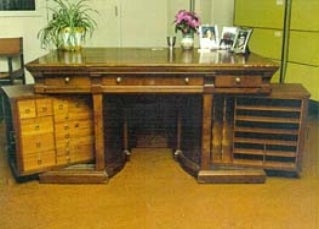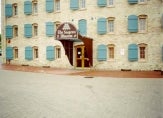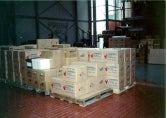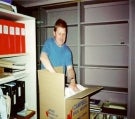Dana Porter Library, first floor
University of Waterloo Library
Waterloo, Ontario N2L 3G1
519-888-4567 x42619 or x42445
The original idea for the creation of the Seagram Museum was to "tell the story of the Seagram company (the world's largest producer and marketer of spirits and wines), the distilling industry, and associated industries such as glass making, cooperage (barrel making) and advertising."
The library collections were acquired to support these areas and in addition to serve as a reference library for those writing and researching in the field of the beverage alcohol industry—"everything from growing grain to alcoholism"—as well as the history and developing technology of wineries and spirits.
In addition the Library acquired significant resources on drinking habits and social customs surrounding the beverage industry--thus one finds a nineteenth century pamphlet by the "father of the Temperance movement," Dr Benjamin Rush, next to the rare example of high "Art Deco" entitled The Savoy Cocktail Book in its first edition of 1930.
The original collections of the Library were established at the LaSalle plant in Montreal in 1970 when the Seagram Information Centre was opened --a facility designed to supply current and historical data to the company's marketing people and other researchers. Those material were eventually brought to Waterloo and incorporated into the Museum's Library in 1982.
The Archives that were donated by the Museum came from a variety of sources--through purchase and donation from individuals and from other offices of the Seagram Company, particularly from offices within the Seagram's Waterloo plant. A significant donation of material from the home of Joseph Edward Frowde Seagram, grandson of the founder Joseph Emm Seagram, was made in 1982.
The desk pictured here was also transferred to the University of Waterloo Library from the Seagram Museum.

Although the exact provenance of the desk has not been established, it is believed to have been made in Preston (now Cambridge Ontario) about 1870-1880 by the W. Stahlschmidt Co.
Interestingly enough, one of UW's founding board members, Percy Hilborn, later bought the Stahlschmidt Co. while another of UW's founding board members, Charles Bronfman, set up the museum. Thus it is quite fitting that this desk, uniting as it does the interests of two important figures in UW's history, should now be part of the University's historical collections.
In 1997 the Seagram Museum was officially closed and material transferred from the Museum building in downtown Waterloo to the University of Waterloo Library. The rare book and archival collections now reside in the Doris Lewis Rare Book Room in the Porter Library.
The Seagram Museum collections were dispersed to a number of institutions, including the City of Waterloo Museum (the major recipient of artifacts), Wilfrid Laurier University (prints,paintings, lithographs and art works on paper), and Brock University (the wine-related library, artifacts and historic wine bottles).
Company records were returned to the official repository for both The Seagram Company and the Bronfman Family archives, the Hagley Museum, Wilmington, Delaware.
Below: Photos of the move from the Seagram Museum to the UW Library. Click to view larger image.







